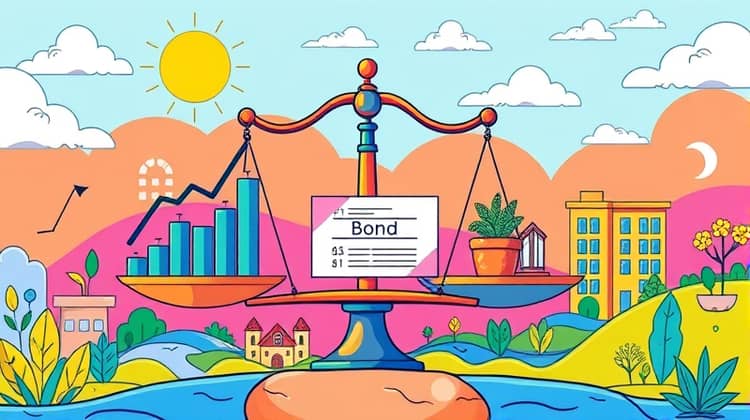When it comes to investing, understanding the various asset classes is crucial for both new and experienced investors. Asset classes are categories of investments that exhibit similar characteristics and behave similarly in the marketplace. This knowledge can help you make informed decisions that align with your financial goals and risk tolerance.
In this article, we will explore the six primary asset classes: stocks, bonds, cash and cash equivalents, real estate, commodities, and alternative investments. We will delve into the nature of each class, their benefits, and how they can fit into your investment strategy. Let's begin by defining what an asset class is.
What is an Asset Class?

An asset class is a group of securities that share similar characteristics, perform similarly in the market, and are subject to the same regulations. This classification helps investors and financial professionals understand the features and risks associated with different types of investments. Examples of asset classes include stocks, bonds, real estate, and commodities.
Understanding asset classes facilitates better asset allocation and diversification in an investment portfolio. By knowing how different asset classes behave under various economic conditions, investors can balance their portfolios to manage risk and seek optimal returns.
1. Stocks (Equities)

Stocks represent ownership in a company and are a popular investment choice due to their potential for high returns over the long term. When you buy stocks, you essentially buy a piece of the company and have a claim on its assets and earnings.
- Common Stocks
- Preferred Stocks
- Growth Stocks
- Value Stocks
- Dividend Stocks
Investing in stocks can yield significant profits, especially if the company performs well and its share price appreciates. However, it's essential to remember that stocks can be volatile and are subject to market fluctuations, which may pose risks to your investments.
2. Bonds (Fixed Income)

Bonds are fixed-income securities that represent a loan made by an investor to a borrower, typically corporate or governmental. They are seen as less risky than stocks and provide regular income through interest payments.
- Treasury Bonds
- Corporate Bonds
- Municipal Bonds
- High-Yield Bonds
- Convertible Bonds
Bonds are a vital part of many investment portfolios as they provide stability and can offset the risks posed by stock investments. Their relatively lower volatility makes them attractive for risk-averse investors.
3. Cash and Cash Equivalents

Cash and cash equivalents are the most liquid assets and include bank deposits, treasury bills, and money market funds. These assets have minimal risk and provide easy access to capital.
- Savings Accounts
- Money Market Accounts
- Treasury Bills
- Certificates of Deposit (CDs)
While cash and cash equivalents offer low returns, they are crucial for maintaining liquidity and fulfilling immediate financial needs. They serve as the backbone of a well-rounded investment strategy, providing a safety net during market downturns.
4. Real Estate

Real estate investments involve purchasing property to generate rental income or profit from appreciation in value. This asset class can be particularly lucrative for those willing to invest time and resources into managing properties.
- Residential Real Estate
- Commercial Real Estate
- Real Estate Investment Trusts (REITs)
- Raw Land
- Real Estate Crowdfunding
Investing in real estate can offer both cash flow and capital appreciation, making it an attractive option for diversifying your investment portfolio. However, it requires significant capital and can be influenced by external factors such as market conditions and property management.
5. Commodities

Commodities are raw materials or primary agricultural products that can be bought and sold. Investments in commodities can serve as a hedge against inflation and market volatility.
- Precious Metals (e.g., Gold, Silver)
- Energy (e.g., Oil, Natural Gas)
- Agricultural Products (e.g., Corn, Wheat)
- Livestock (e.g., Cattle, Hogs)
- Industrial Metals (e.g., Copper, Aluminum)
Investing in commodities can diversify an investment portfolio and provide protection against currency fluctuations and economic downturns. However, commodities can be highly volatile and subject to global supply and demand dynamics.
6. Alternative Investments

Alternative investments refer to assets that do not fall into traditional categories like stocks, bonds, or cash. These can include hedge funds, private equity, and venture capital.
- Hedge Funds
- Private Equity
- Venture Capital
- Art and Collectibles
- Cryptocurrencies
Alternative investments can provide diversification benefits and potentially higher returns. However, they also come with higher risks and typically require a more significant investment commitment and lower liquidity compared to traditional investments.
Why Asset Classification Matters

Understanding asset classification helps investors make informed choices based on their financial goals, risk tolerance, and investment horizon. By categorizing assets, investors can plan their portfolios more effectively and ensure they have a balanced mix of risk and returns.
Categorizing investments allows for better comparison and analysis. Investors can assess the performance of various asset classes and adjust their strategies based on their findings, leading to optimized portfolio management.
Diversification: The Key to Risk Management

Diversification is the practice of spreading investments across multiple asset classes to reduce risk. By diversifying, investors can minimize the impact of a poor-performing investment on the overall portfolio, as different asset classes often perform differently under various market conditions.
For instance, when stocks may be yielding low returns, bonds or real estate might be performing well and can help balance the overall investment results. This strategic approach enables investors to maintain stability while pursuing growth opportunities. It is often said that 'diversification is the only free lunch in investing,' meaning it provides a substantial benefit without additional cost.
Conclusion

Understanding asset classes is essential for smart investing. Each asset class has its own risk-reward profile, and knowing how to allocate your investments among them can lead to greater financial success. By diversifying your portfolio across various asset categories, you can protect your investments and achieve your financial goals.










